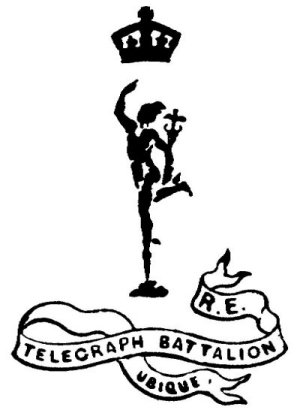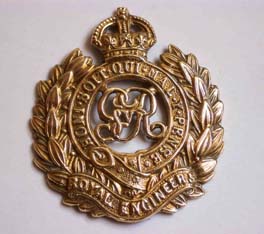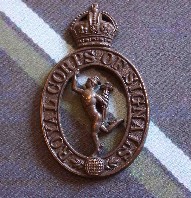
INTRODUCTION
The Royal Corps of Signals was formed in 1920 however the present day communications systems can be traced to the opening up in 1837 of the new field communications when the electric telegraph was invented. The Royal Engineers provided communications systems during the Crimean War.
In 1870, C Telegraph Troop RE was formed and given the responsibility for providing telegraph communications for the field army.
In 1884, C troop and the Postal Telegraph Companies were amalgamated to form the 1st and 2nd Divisions of the Telegraph Battalion Royal Engineers.
The figure of Mercury (the messenger of the gods) was adopted by the Telegraph Battalion Royal Engineers as its emblem.
Major C. F. C. Beresford RE, who was the CO of the 2nd Division, asked for suggestions to be put forward for a Battalion crest. It was his own idea of the figure of Mercury which proved to be the most popular and hence forth on both headed paper and indeed special occasions the emblem of Mercury was used above which was a crown whilst below the figure was a scroll baring the words:
"RE - Telegraph Battalion - Ubique".

On the 28th June 1920 the then Secretary of State for War, the Right Honourable Winston Churchill, signed a Royal Warrant giving the Sovereign’s approval for the formation of a
"CORPS OF SIGNALS".
On the 5th August 1920, His Majesty King George V conferred the honour of "ROYAL" on the Corps hence creating the "ROYAL CORPS OF SIGNALS".
This distinction was promulgated in Army Order 359 of 1920.
During the short period between formation and Army Order 359 of 1920, the cap badge of the Royal Engineers was worn by "CORPS OF SIGNALS" personnel.

The original "ROYAL CORPS OF SIGNALS" cap badge was approved and authorised under the sealed pattern dated 24th March 1921. The official heraldic description of the first Corps badge was as follows:-
On the base of an oval band inscribed ‘ROYAL CORPS OF SIGNALS’ a globe,
thereon a figure of Mercury, the whole ensigned with the Imperial Crown.

THE BADGE WAS BORN